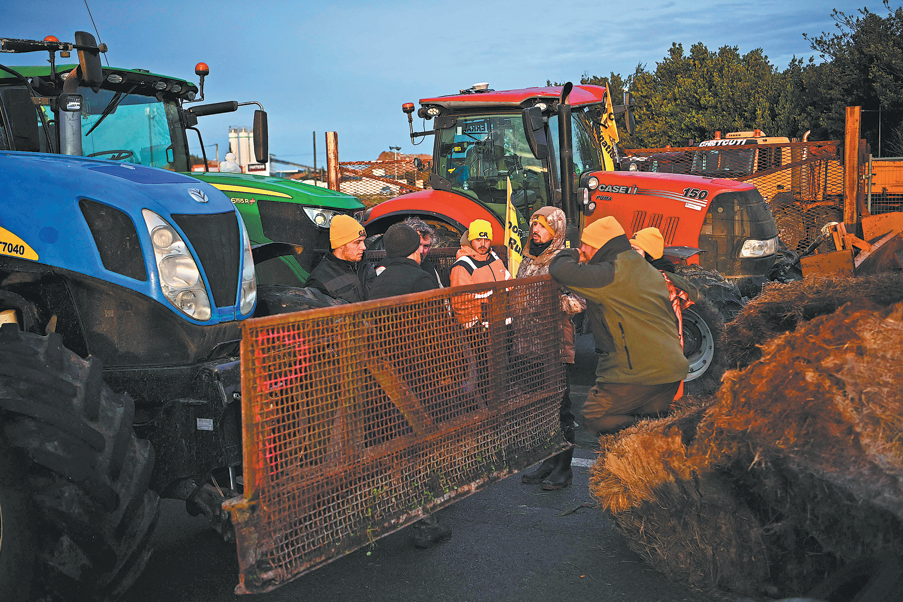Book toasts Chinese who helped grow Napa Valley

Laborers played crucial role in building $34 billion wine industry, but their contribution to the US economy has been mostly forgotten

"You worked so hard, and we should have treated you much better," John McCormick says in the dedication page of his new book, Chinese in Napa Valley: The Forgotten Community that Built Wine Country.
Napa Valley, the world-famous wine-growing region of California, has almost 500 wineries that draw 4 million visitors a year and contribute more than $34 billion annually to the US economy.
Without Chinese laborers Napa would not be what it is today, but the history and even the presence of Chinese workers were largely erased, according to McCormick's book, which explores the contributions that Chinese laborers made and the hardships they faced in Napa Valley from 1870 to 1900.
His book fills a 30-year gap in the region's history, which local historians said helps remind people of the forgotten stories when they drink Napa wine, and which one said "forever changes the heritage we celebrate".
McCormick had never heard of this history until recent years when he took a US-China relations class at Harvard University and came across an article on Chinese vineyard workers in Napa Valley.
"It was amazing, and I was angry that I was not taught that," the fifth-generation Napa Valley native said. "We learn about George Young (a Napa Valley founder); we learn about Native Americans (who used to work in the fields there), but we never learned about Chinese laborers."
He then tried to find out more about this history, but records are scant, so he decided to "bring it more to light".
After two years of research and writing at a time of rising anti-Asian hate during the COVID-19 pandemic, he published the book last month.
In the late 19th century, Chinese workers were the main labor force for the wine industry that was just getting started in Napa, and they were indispensable in the development of the early wine industry, the book says. By the 1880s, they comprised up to 80 percent of the labor force working in the vineyards.
At that time, many Chinese laborers had just finished working on the transcontinental railway. Just as they built tunnels in the Sierra Nevada Mountains, using hand tools and explosives, they were willing to do the backbreaking and dangerous work of excavating the wine caves.
The wine caves dug by Chinese laborers at Schramsberg Winery are still in use today. It is one of the few places providing direct evidence of Chinese contributions to the region. Apart from working hard, Chinese workers were more successful than other workers for several other reasons, McCormick said.
While Chinese workers were renowned for being extremely reliable, other workers had a reputation of abandoning their tools in the middle of fields whenever news of a gold strike reached town, said McCormick.
"The Chinese didn't do that. If they entered into a contract, they completed the job. So this was perceived as being loyal. They stuck to their word," he said.
The Chinese also helped with a large labor shortage at the time, because other laborers disdained working in vineyards.
Unlike with today's vineyards, in the late 1800s, grapes were planted close to the ground, so workers had to stoop over to harvest them, which was called stoop labor, McCormick said. "The white agricultural workers felt that it was demeaning to do anything in a farm that required stooping over."
Despite the Chinese laborers' success, they were paid much less than others. For example, a large winery owner of the time paid Chinese laborers $1 without food and board, but he had to pay other workers $1.50 a day. During harvest season the Chinese laborer picked an average of 680 kilograms of grapes a day for $1, the book says.
"It was almost 50 percent more to employ white workers," McCormick said. "So that would make sense that it would be a big deal."
Chinese immigrants also worked on hop farms, in quicksilver mines and leather tanneries, and on railways, and as domestic servants. They had a common purpose: earning enough to be able to send money home to their families in China.
Yet, despite their critical role in the Napa Valley economy and community, they were despised and feared and threatened by many locals, especially white men who felt that well-paying jobs were being taken away from them.
They faced the anti-Chinese movement of the 1880s, led by powerful white labor and political forces at national, state and local levels.
The movement made their life miserable. They would never be allowed to be citizens, own land and settle down in Napa. The Chinese were harassed and bullied going about their daily lives.
By the early 1900s most Chinese workers had been driven out of Napa Valley. Their once vibrant Chinatowns had been destroyed, and their contributions — even their very presence — were largely forgotten.
They provided the only possible source of labor that could have made any of those industries successful in those crucial early decades, McCormick said, yet xenophobic locals and anti-Chinese policies drove them away in favor of white Italian workers.
Today there are almost no wineries, places or monuments acknowledging and explaining the Chinese presence or contributions. "Their story is one of a strong entrepreneurial spirit and tenacity that should not be forgotten," McCormick said.
His book has drawn plaudits from historians as well as readers. Sheli Smith, executive director of the Napa County Historical Society, said the book "enriches the tapestry of Napa Valley history" and "forever changes the heritage we celebrate".
Connie Young Yu, a Chinese-American writer and historian, says in the foreword, "No one who reads this book will ever again sip a glass of Napa wine without being reminded of the Chinese who planted the vineyards and harvested and processed the grapes, but were denied a place at the table."
Matt Pease, chair of the Chamber of Commerce in Lafayette, California, said in his review of the book, "How the immigrants were treated was terrible, but it is a great reminder of the positive impact immigrants make on our communities."
liazhu@chinadailyusa.com

































